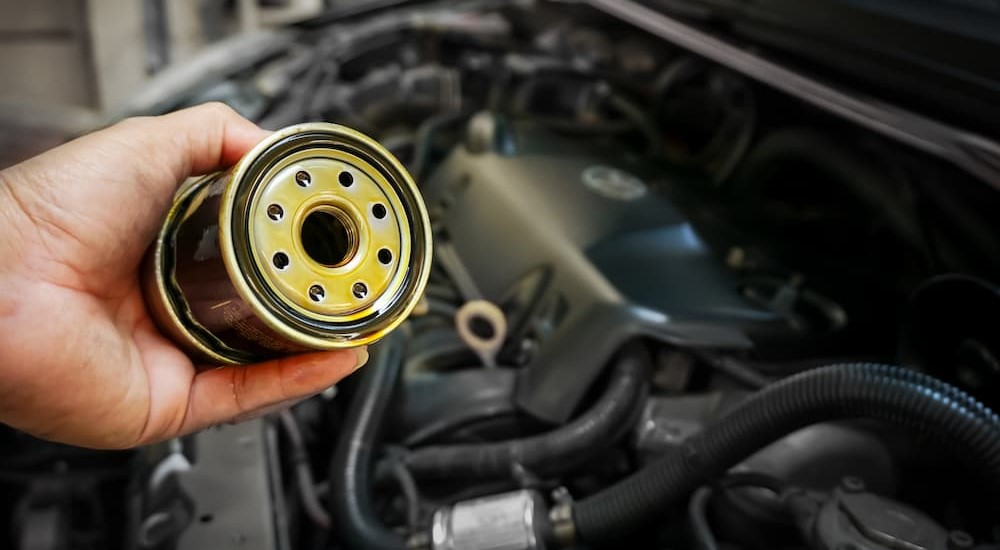Most people love tall tales; the more salacious, the better. It’s how tabloids make their fortunes, capturing our attention with the latest sightings of Elvis, aliens, and Bigfoot that perpetuate gossip, myths, and misconceptions. The automotive industry isn’t often in the tabloid crosshairs unless Elvis is spotted driving a Ford Bronco along the Pacific Coast Highway with the wind in his hair. Even then, there’s more talk about the legend himself than the adventurous icon on four wheels.
However, the automotive industry isn’t immune to myths and misconceptions. For example, routine oil changes are encircled by myths that confuse many drivers and make us leery of dealership recommendations. After all, we spent decades living by the mantra that oil changes were required every 3,000 miles, but now we’re told that this isn’t true. So, who do we believe? Fortunately, you don’t have to look far for the truth, as I’m here to tackle the biggest myths and misconceptions around oil changes.
Myth #1: Oil Changes Are Required Every 3,000 Miles
Many experienced drivers abide by the adage that oil changes are required every 3,000 miles. However, this is a popular misconception. Quick-lube chains introduced the idea in the 1970s and 1980s, giving drivers an easy way to remember routine car maintenance. At the same time, it also encouraged repeat customers that kept these chains in business.
Over the years, the 3,000-mile standard was passed down from generation to generation until advancements in the automotive industry disproved the myth. As a result, the rule is outdated because engine design and oil quality are legions beyond what they were in the 1970s. Today, automakers set model-specific oil change intervals that can range anywhere from every 5,000 miles to 25,000 miles, depending on the type of oil used and the powertrain. Check your owner’s manual to see how often you should change the oil in your vehicle.

Myth #2: You Don’t Have to Change the Oil Filter Every Time
Every routine oil change includes replacing the oil filter, but some drivers believe this is an unnecessary service designed to add to the overall cost of the oil change. Truthfully, this is another misconception that can be detrimental to your vehicle’s performance and the longevity of your engine. How so?
As the oil lubricates and cools the engine, it removes harmful contaminants, like dirt and debris. The oil picks up this debris during daily driving, and the filter exists to remove the pollutants and help maintain the quality of the oil. However, over time, the filter becomes saturated with these contaminants and cannot do its job as effectively, causing the oil to become sludge as it absorbs more dirt and debris. By replacing the filter with every routine oil change, you’re ensuring the filter can adequately do its job while extending the life and service of the motor oil.
Myth #3: Dark Engine Oil Indicates It’s Time for an Oil Change
Another misconception about engine oil is that dark or black oil is a telltale indicator that you need an oil change. It’s easy to understand the foundation of this myth because most people are taught to check the oil using the dipstick, observing the color and level of the oil. However, what’s missing from this process is an in-depth understanding of the different types of oil, their colors, and what happens as motor oil does its job to clean, lubricate, and cool the engine.
Oil naturally darkens as the engine runs, meaning darker oil is a sign that it’s doing its job. As the engine exposes the oil to heat, the oil and its additives are constantly working to keep the engine healthy by lubricating and picking up debris. These additives ensure the contaminants don’t stick to the engine but remain in the oil and oil filter. As a result, the oil turns darker through oxidation and shuttling these harmful pollutants to the filter. What you do want to watch for is any grit, dirt, or other debris in the oil, as this is an indication that it’s time to change it.
Myth #4: Switching Between or Mixing Conventional and Synthetic Oil is a No-Go
Advancements in engine design and oil composition have introduced us to modern innovations like synthetic oil. For decades, vehicles have operated with conventional or refined crude oil. However, synthetic oil alters the chemical compounds by breaking them down and rebuilding them to enhance their effectiveness and optimize lubrication. As a result, synthetic oil promises better performance. Still, its introduction has caused quite a stir in the industry and contributed to the myth that you can’t switch between or mix conventional and synthetic oil.
Synthetic oil is available in two forms–synthetic blend and full-synthetic. Synthetic blend oil mixes conventional and synthetic oil to increase performance and offer better protection. This blend proves the myth is untrue, and you can switch between and mix the oils. However, there’s a caveat to busting this misconception.
While you can mix synthetic and conventional oil, most mechanics don’t recommend it unless it’s an emergency. Adding conventional motor oil to a vehicle that runs on a synthetic blend lessens the effectiveness of the synthetic oil because it’s engineered with higher-quality components. If you don’t have a choice and must mix the oil, then that’s better than being low on oil, but it’s best to get an oil change sooner rather than later.

Myth #5: Synthetic Oil Leads to Excessive Oil Leaks and Engine Trouble
Anytime we’re introduced to something new, there’s always a chance of failure or room for improvement. When synthetic oil was introduced to the automotive industry in the 1970s, it was met with curiosity. After all, it’s mechanically engineered to improve performance, so many assumed there was a catch. It turns out that there was. Synthetic oils in the 1970s weren’t perfected like the blends used today. Before long, mechanics reported excessive wear and tear on engine gaskets and seals that led to oil leaks and a revolving door of issues, thus leading to the misconception that synthetic oil isn’t great for your engine.
While the myth was valid in the 1970s, it isn’t true today. As engine design has advanced, synthetic oil formulas have evolved to remedy past issues and heighten performance. Synthetic oil offers better protection through mechanical engineering without compromising efficiency, longevity, or responsiveness. Today, most mechanics agree that synthetic oils are leagues beyond conventional oils.
Myth #6: Oil Additives Are All the Same Because They Improve How the Engine Performs
If you’ve ever heard the saying that “more is always better,” then you understand the basis of the myth that the more additives in the oil, the better the engine performs. Many believe all oil additives are identical and designed to improve the engine’s performance or power output. However, no type of oil or oil additive can push your engine to deliver more horsepower or enhance its fuel economy beyond what it was built to provide. Instead, oil additives are engineered for specific roles. For example, some are ideal for older cars with higher mileage because they help preserve the seals. Others optimize the oil’s effectiveness as an engine is pushed to its limits when towing or racing, making these additives specific to heavy-duty trucks or sports cars.
Deciphering Fact from Fiction
While there are plenty of myths and misconceptions about oil changes and engine oil, deciphering fact from fiction doesn’t have to be overwhelming or stressful. Many of the most common myths we’ve highlighted stem from practices throughout the 1970s, like the 3,000-mile oil change interval and the belief that synthetic oil leads to engine trouble and leaks. Early synthetic oil formulas caused leaks, perpetuating a myth that’s no longer true thanks to advancements in oil development.
As with any misconception, the best way to dispel it is generally to look closer at what it means and how it applies to you. You can always refer to a trusted and reputable mechanic or dive into the depths of your owner’s manual for insights into the recommended oil change intervals and type of oil to use. Armed with this information, you can see that knowledge is power and that learning more is the first step in proper vehicle maintenance based on today’s industry and not the industry of yesteryear. Now, the next time someone tries to warn you about the dangers of synthetic oil or says they’ve hit 3,000 miles and need an oil change, you can help free one more driver from these myths.

